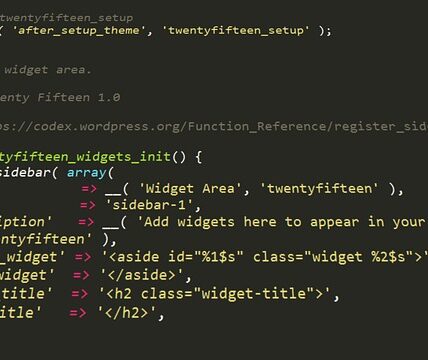Are there ways to create interactive elements on a website with React components? How do we keep components dynamic? What are the benefits of using props with components?
Developing with React can be a bit tricky, as components often need to be defined statically before being able to interact with each other. React components can be compartmentalized, allowing for efficient reusability of common elements. However, even with the built-in features of React, components can quickly become difficult to manage due to their static nature. In order to maintain flexibility and to avoid repeating code, dynamic components must be used. Props are a powerful tool offered by React that allow developers to use components dynamically and quickly.
According to Boris Dinkevich from DeveloperTech, props can offer a more efficient, organized way to create components within React applications. Anil Dhawan of Pluralsight states that props allow components to receive data and code snippets from their parent components. Every React component is built with a set of props, which can either be predefined or customized. This is the concept at the core of the idea behind props: components can receive data from their ancestor components.
In this article, you will learn about how to make use of props when creating components in React. We will explore the concept of props and how to create them, as well as discuss the various benefits and drawbacks of incorporating props into your React components. Finally, we will examine the importance of dynamic components and discuss how to make the best use of props to create them.
Definitions
Props are a feature of React, which are used to enable components to communicate and interact with each other. They are basically key-value pairs which hold information that a component can use to render certain elements in a user interface. Props enable components to receive data from one another and pass data around in a structured manner. In React, a component can have both state and props associated with it. State contains information that is internal to the component and excludes information coming from other components, whereas props represent data that is passed from one component to another.
Props are data passed down from a parent component to a child component. This data typically contains properties that the child component needs to render correctly. Props are one way the parent component can pass data to the child component. Other ways include context and state.
Components are the building blocks of a React application. They are bits of code that contain both HTML and JavaScript. Components are reusable pieces that can be used to create a user interface for an application. They contain elements such as text, buttons, and images.
Using props with components in React is a process of passing data from one component to another. This is done through props, which can contain various data types such as strings, numbers, objects, and arrays. When a component is created, it can accept one or more props as arguments. These props are then available to the component, and can be accessed in different ways depending on the type of props being used.
Using Props Effectively with Components in React
Using Props Effectively with Components in React
Benefits of Using Props
In React, props (short for properties) are a code term that refers to a set of values passed from a parent component to a child component. React’s props system provides a way to structure and share data from component to component in a way that makes sense. Props help make your code easier to read and maintain, as well as ensuring more correctness in your components. They are also a great way to implement features such as caching, lazy loading, and testing, all without sacrificing data integrity.
React’s props allow for data flow from one component to another. For example, the parent component may pass a data object to a child component. The child component will then use this data object to render its template. This makes components reusable and eliminates redundant HTML code that would otherwise exist.
React also allows for stateless components, which means that they do not maintain their own state and instead rely on parent data for the data they render. By using props, components can preserve their API contracts, simplifying the writing of tests and ensuring that components remain in-sync with their intended usage.
Why You Should Use Props Responsibly
Although props are a powerful tool for React developers, they should be used responsibly. For example, props should not be used as a way to migrate data from one component to another. This can lead to confusion if multiple developers are working on the same codebase and components’ props start to get out of sync with each other. Additionally, this can make it harder to debug a component within a large application.
Instead, props should be used for simple values like strings, numbers, and booleans. Values such as arrays and objects should be handled within a parent component, and the parent component should use that data to pass the necessary values to the child component.
Additionally, props should not be used as a global state repository. This could lead to incorrect data or an unexpected change of state when a parent component updates its props.
Tips to Master Using Props
- Create prop types for props that you’re passing down. This will ensure the child component is only using the data type that the parent component is expecting. It also helps use enforce a consistent API among different components.
- Comment each of the props to ensure developers can easily tell what the prop is intended for.
- Utilize destructuring to make props more maintainable. It also reduces the number of lines of code in the component.
- Name props consistently. This will make it easier for other developers that read the code to know what the purpose of a specific prop is.
- Avoid passing down large objects or data structures to a component whenever possible.
At its core, React’s props system is easy to use. However, it is critical to use props responsibly and consistently to ensure data remains in sync across the codebase. When done correctly, React’s props make it easier to create maintainable and testable applications.
Making Props Work for You in React
Props are a powerful tool in React, allowing you to easily pass data between components and customize components to meet your needs. It can seem daunting to learn how to use props effectively, but with a few tips and tricks, you can become a pro at using props in your React projects.
What is a Prop?
A prop is an object that is passed from a parent component to a child component. The props object can contain arbitrary data and functions, and it is possible to pass multiple props to a single child component. By passing props from the parent, the state of the component is controlled and the child will render itself in response to any changes to this data.
Using Props Effectively
To use props effectively in React, it is important to understand how to declare props in the parent component and how to access them in the child component. In the parent component, props must be declared as an object containing key/value pairs. The keys will become the names of the props that can be accessed in the child component. The values can be anything, such as a number, a string, a callback, or an array. In the child component, props are referenced using the this.props object and its corresponding values.
Once props have been declared and made available to the child component, they can be used in the same way as any other data in the component. Props can be used as variables in logic, as values in functions, or as values to be displayed in the rendered view. By using props in the child component, the data can stay up to date with any changes in the parent component as it is passed down from the parent.
It is also possible to customize props before passing them down to the child. This is done using the state object, which is an object that stores data related to the current state of the component. By updating the state object in the parent component, props can be modified and passed down to the child using the setState() function. By combining props and state, components can be made even more flexible and customizable.
Props are an important tool in React, and understanding how to use them effectively is essential for building powerful applications. With practice and experimentation, you can become a pro at using props with components in React.
Tips for Maximizing the Use of Props and Components in React
Using props and components in React can open up an endless variety of possibilities. While it can be somewhat of a learning curve, it is definitely worth it for the flexibility it provides. Here are some tips to make using props and components with React easier.
Breaking Down Complex Components
One way to make using props with React components easier is to break down complex components. The more complex a component is, the more props must be passed separately to the component. This makes for shorter component definition blocks and more readable code. This is also one way to make sure props don’t get lost in a long parameter list.
Using Smaller Components for Flexibility
Using smaller components will make props in React more flexible. Smaller, reusable components take advantage of props like props.children, which can substitute for text, references to other components, classes, and more. This is beneficial because the same props can be used over and over with different components. Additionally, smaller sized components are easier to debug since they can be tested and debugged separately.
Props that are used often between components can be standardized with one or more library files. This ensures that the same props are used in the same way within a project. Standardizing props can also allow multiple developers in the same project to be working on the same project with the same set of props.
Last but not least, investing some time in creating more props to use with components can also be beneficial. This can help to create a flexible set of props to work with for presentational purposes. For example, prefixing classes with a “p-” and global classes with a “g-” can be helpful when it comes to styling a project.
All in all, using props with components in React can be a challenge. However, with these simple tips, it can be made much easier. Breaking down complex components, using smaller components, standardizing props, and investing in creating more props are all invaluable strategies for taking full advantage of the power of props and components in React.
Conclusion
The use of props with components in React is an incredibly powerful tool that developers can take advantage of. By using props, components can be used in an array of different ways, allowing developers the freedom to create truly unique experiences in a UI. It’s a relatively simple concept, yet it packs a lot of punch. What other innovative ways can developers use props to enhance a user’s experience?
If you’d like to learn more about props and their incredible capability for the React framework, follow our blog page and keep track of our upcoming releases! We’ll have new posts about the latest and greatest developments for components and props, and stay ahead of the curve with our industry insight.
To recap, let’s take a look at some of the FAQs regarding the use of props and components in React. What kinds of props can be used with components? Props are used to pass data and information from the parent component to the sub-components. They give developers a great platform to add extra functionality or visuals to an app or component. Are props the same as state? No, props are different from state. Props come from the parent component and can’t be changed while state is the data accumulated within the component and changes based on user interaction. How can props bring out the best of a component? By using props, developers can extend the functionality of a component by linking dynamic data with it, making more powerful and unique UI experiences. Do props persist forever? No, props only exist during the lifetime of a component. As soon as the component is unmounted, the props of the component are lost. How can props be passed between components? Props are passed down from the parent component to the sub-components through an attribute value that is passed to the sub-component. This allows the parent component to access the sub-component data.




